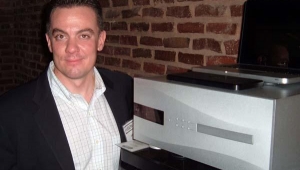| Columns Retired Columns & Blogs |
Yes these high bias BJT amps are bad for the environment, but they sound the best to audiophiles.
We are a bit like "environmentalist surfers" who ride surfboards that last a season or two and end up in landfill, and are the worst pollution product ever to manufacture and dispose of.
But these BJT amps drive real difficult loads, not just a 20 "peak amps" like Class-D mosfets, but can do more than twice as many "continuous amps" into hard loads, and sound better into them because of it.
Can't wait for JA to bench test this one, (and not have to use the AP AUX-0025 filter) so we see what really coming out of it's rear end.
Cheers George









































